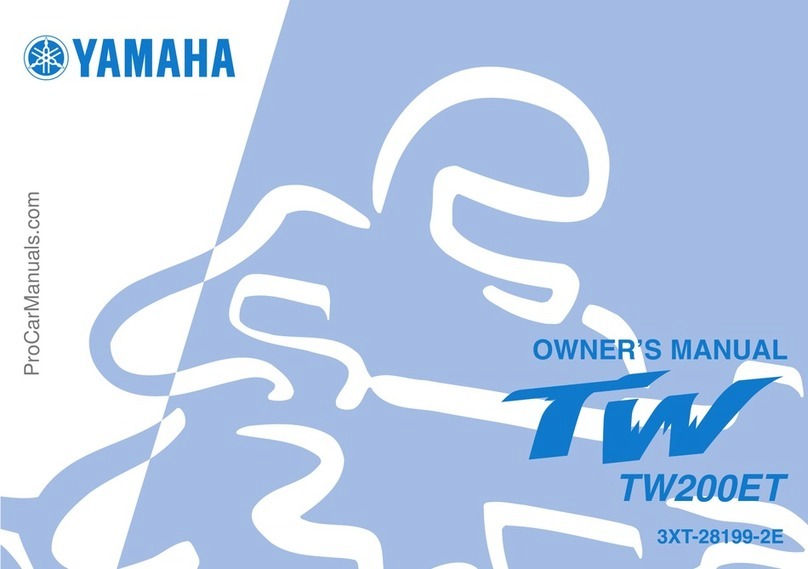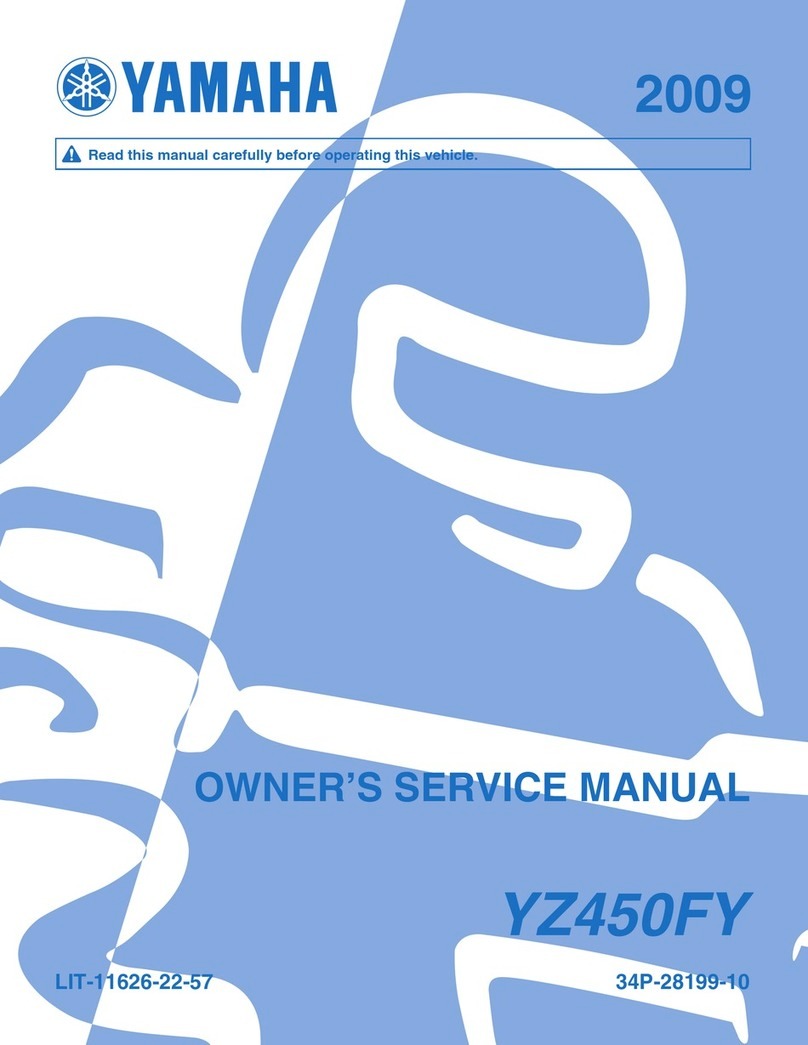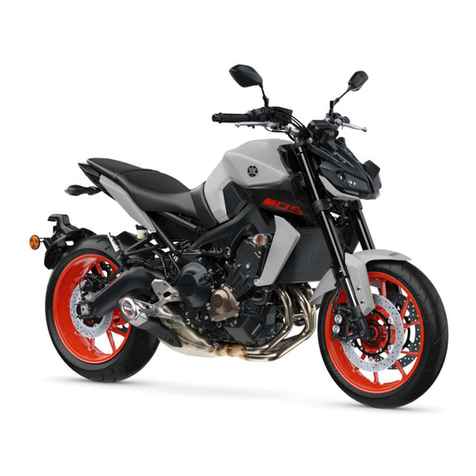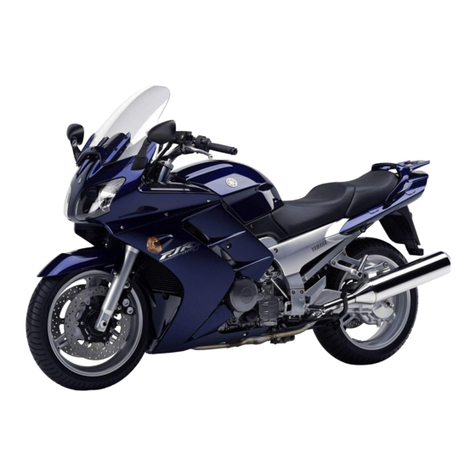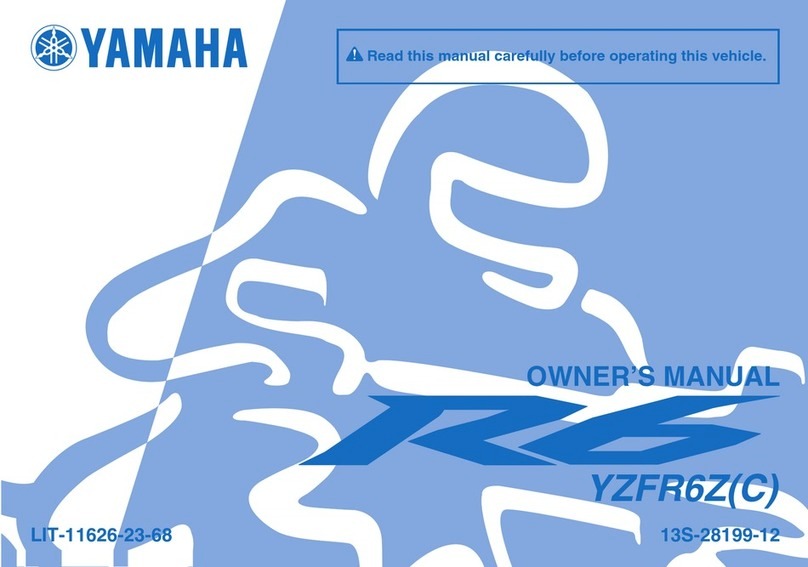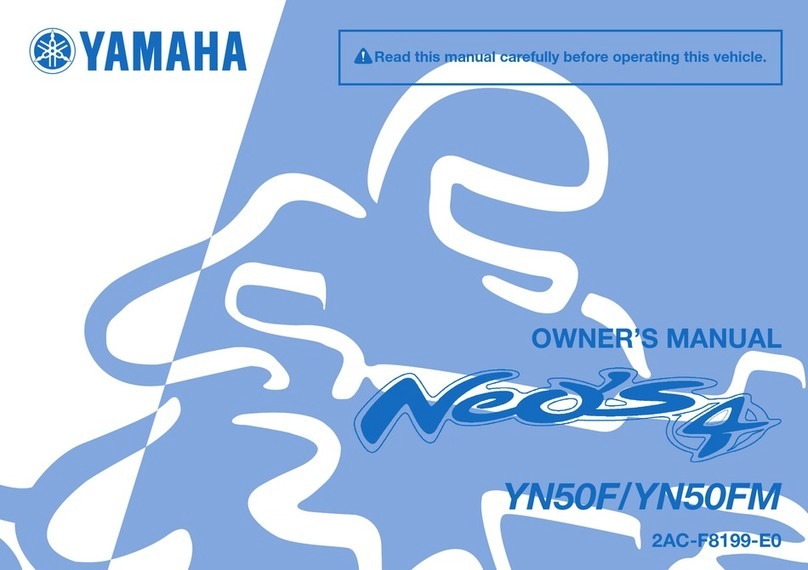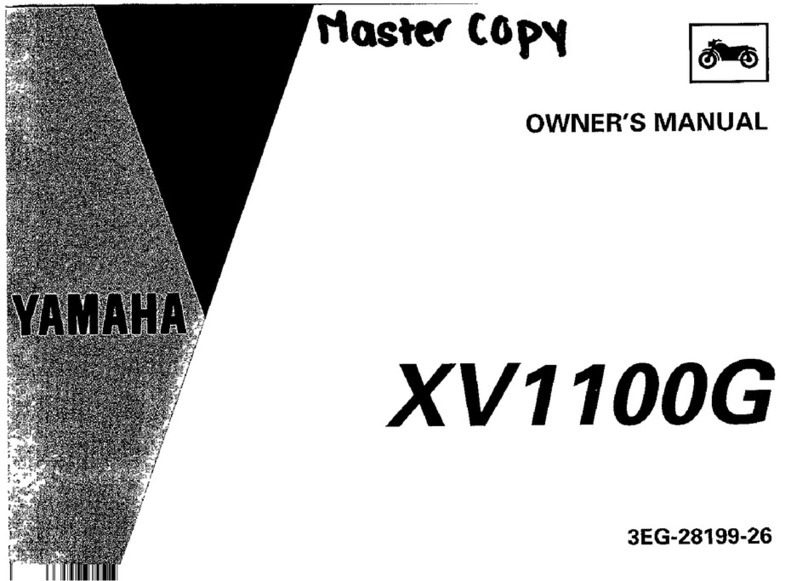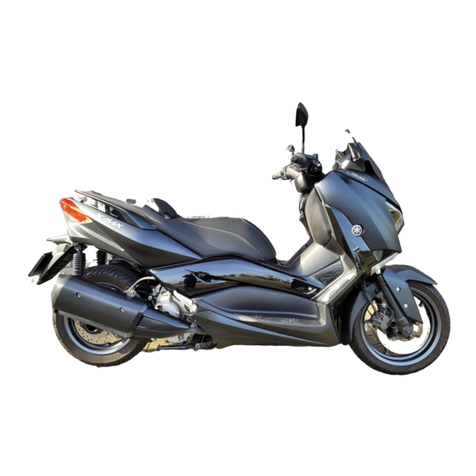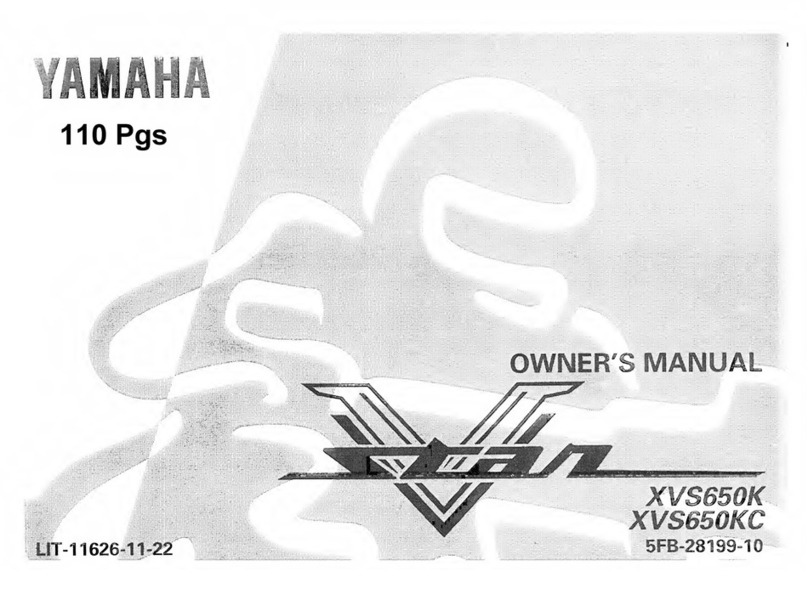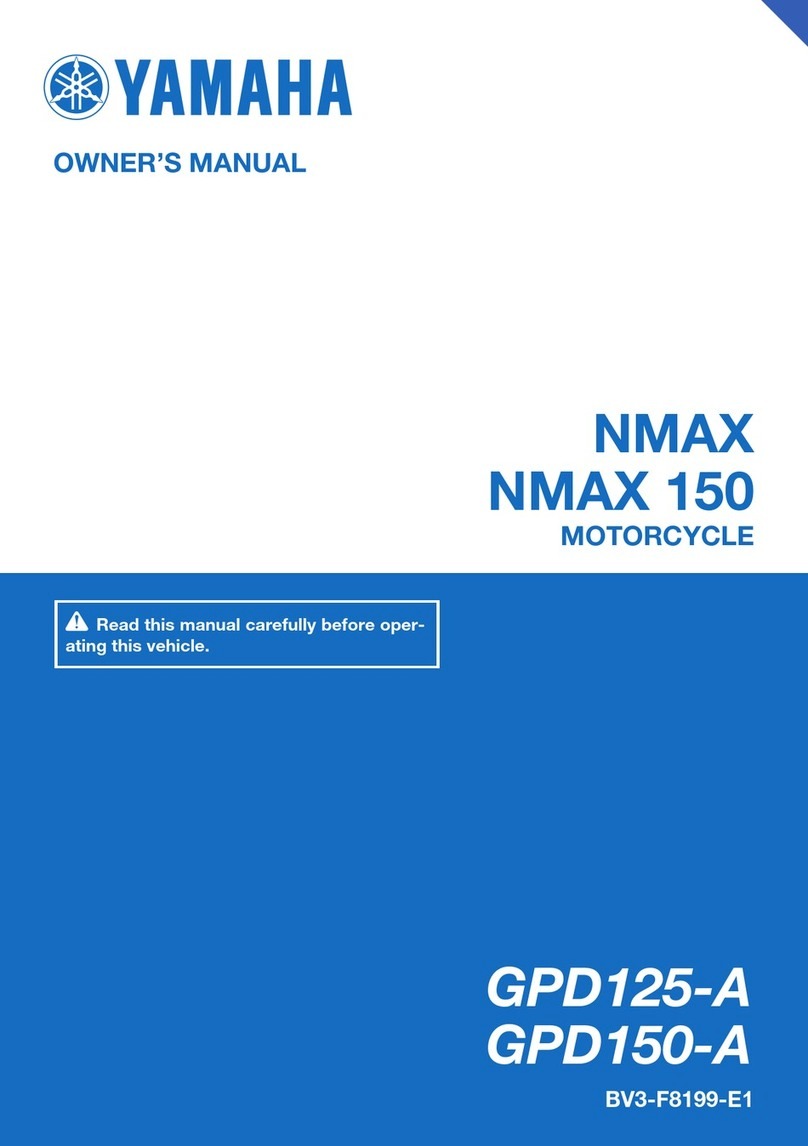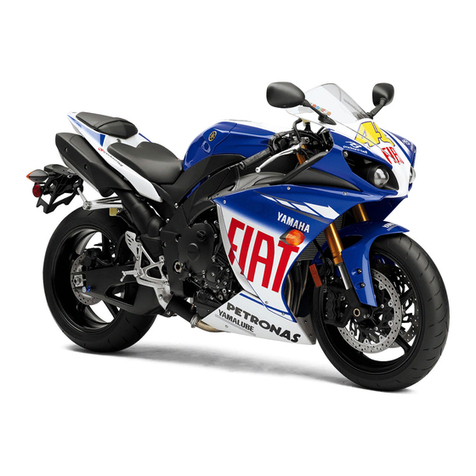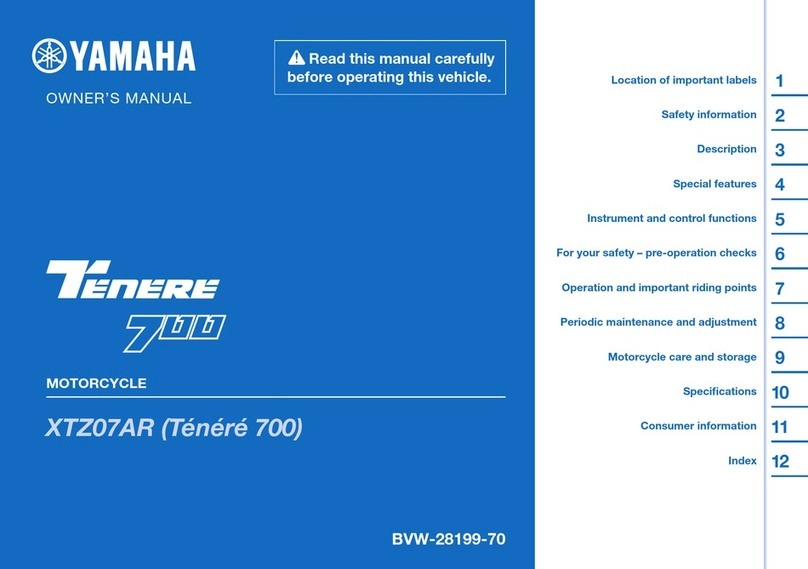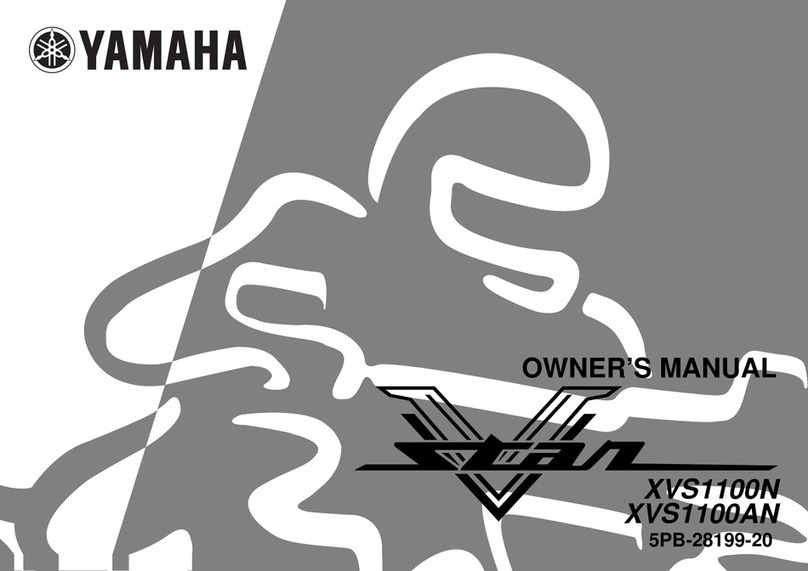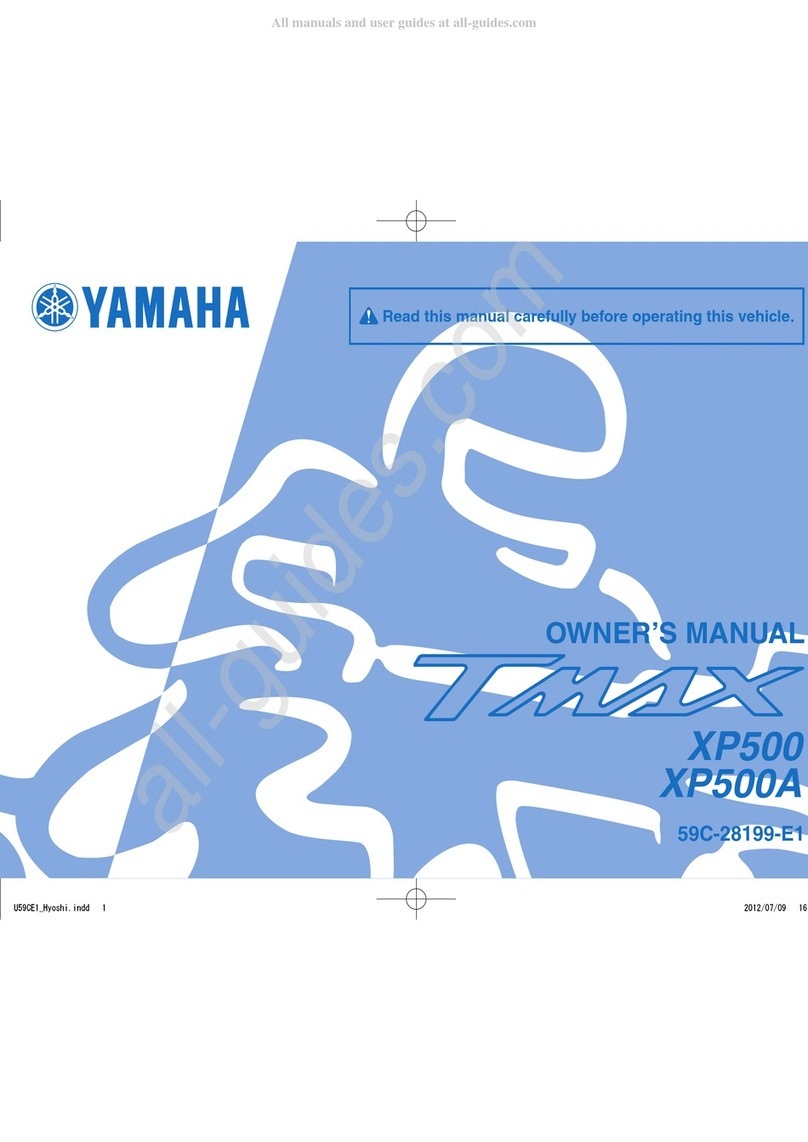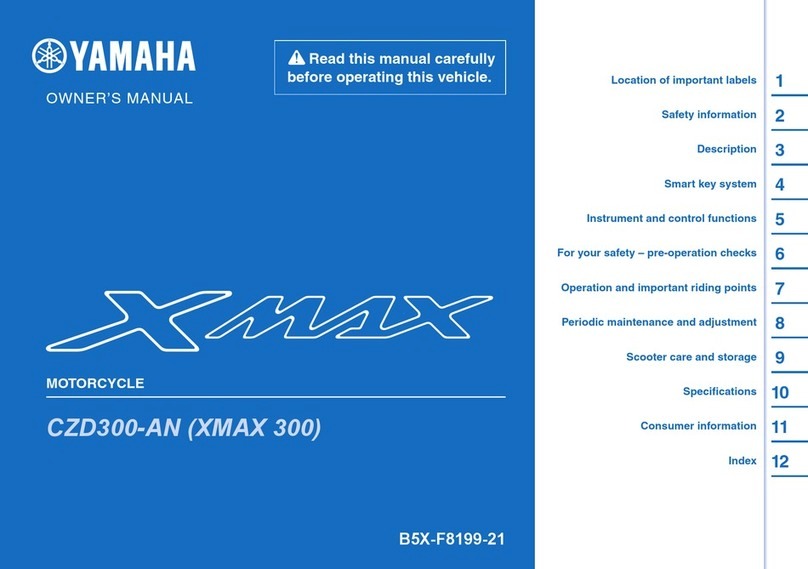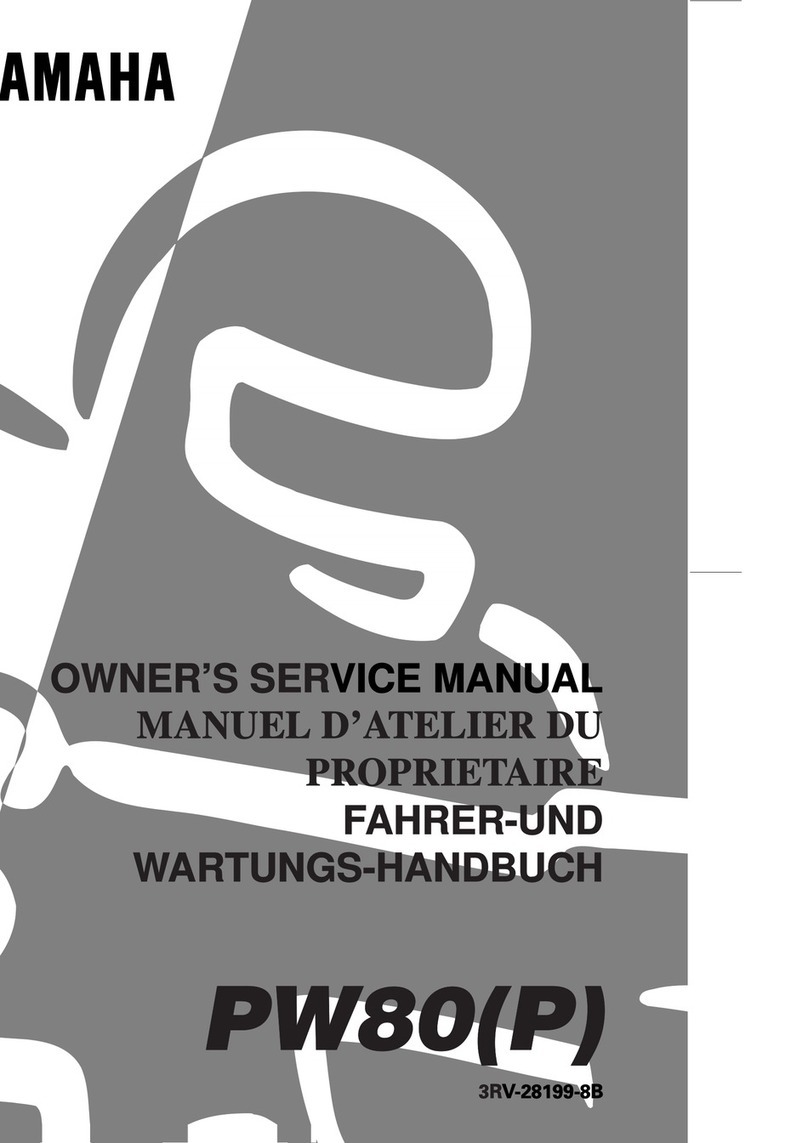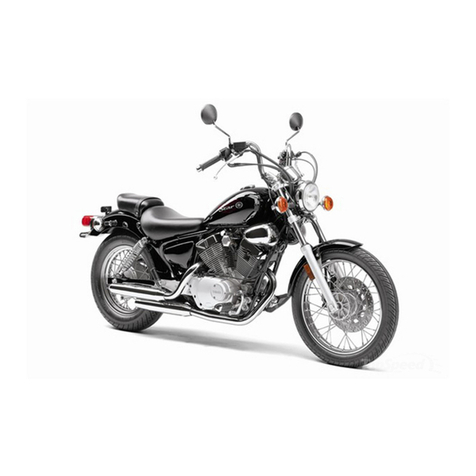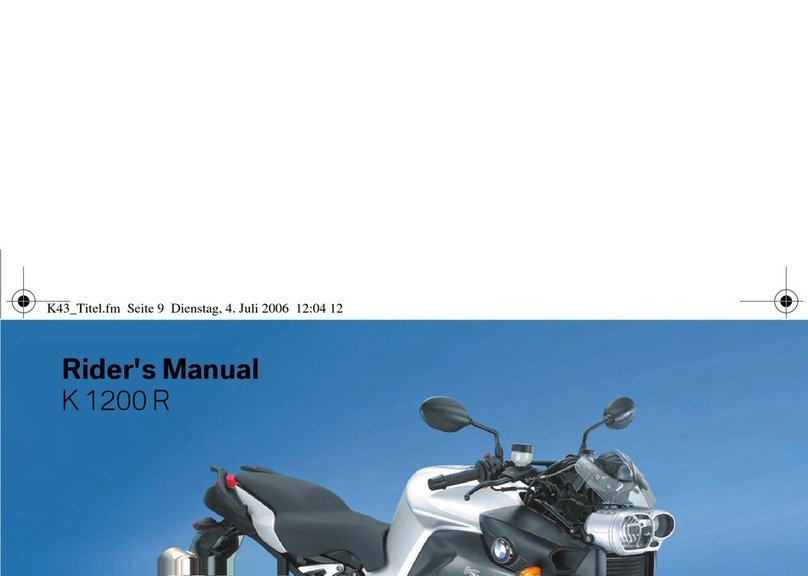SAFETY INFORMATION.....................1-1
DESCRIPTION.....................................2-1
Left view ...........................................2-1
Right view .........................................2-2
Controls and instruments .................2-3
INSTRUMENT AND CONTROL
FUNCTION ..........................................3-1
Main switch/Steering lock ................3-1
Indicator lights ..................................3-2
Speedometer unit .............................3-3
Fuel gauge ........................................3-3
Clock.................................................3-4
Handlebar switches ..........................3-4
Front brake lever...............................3-5
Rear brake lever................................3-5
Fuel and 2-stroke engine oil tank
caps...............................................3-5
Fuel ...................................................3-6
2-stroke engine oil ............................3-7
Kickstarter.........................................3-7
Seat...................................................3-7
Storage compartment.......................3-8
PRE-OPERATION CHECKS ...............4-1
Pre-operation check list....................4-2
OPERATION AND IMPORTANT RIDING
POINTS................................................5-1
Starting a cold engine ......................5-1
Starting off ........................................5-1
Acceleration and deceleration..........5-2
Braking..............................................5-2
Engine break-in.................................5-2
Parking..............................................5-3
PERIODIC MAINTENANCE AND
MINOR REPAIR...................................6-1
Periodic maintenance and lubrication
chart ..............................................6-2
Checking the spark plug ..................6-4
Final transmission oil ........................6-5
Cleaning the air filter element...........6-6
Adjusting the carburetor...................6-7
Adjusting the throttle cable free
play................................................6-7
Tires ..................................................6-8
Cast wheels ....................................6-10
Adjusting the brake lever free
play..............................................6-10
Adjusting the rear brake lever free
play..............................................6-10
Checking the front brake pads and
rear brake shoes..........................6-11
Checking the front brake fluid
level .............................................6-12
Changing the brake fluid ................6-12
Checking and lubricating the
cables ..........................................6-13
Checking and lubricating the throttle
grip and cable .............................6-13
Adjusting the Autolube pump.........6-13
Lubricating the front and rear brake
levers ...........................................6-14
Checking and lubricating the
centerstand .................................6-14
Checking the front fork...................6-14
Checking the steering.....................6-15
Checking the wheel bearings .........6-16
Battery ............................................6-16
Replacing the fuse..........................6-17
Replacing the headlight bulb..........6-18
Replacing a turn signal light bulb...6-19
Replacing the tail/brake light bulb or a
rear turn signal light bulb ............6-19
Replacing the license plate light
bulb .............................................6-20
Troubleshooting ..............................6-20
Troubleshooting chart .....................6-21
SCOOTER CARE AND STORAGE .....7-1
Care ..................................................7-1
Storage .............................................7-3
SPECIFICATIONS ...............................8-1
CONSUMER INFORMATION .............9-1
Identification numbers ......................9-1
TABLE OF CONTENTS
5RN-F819D-E3.QXD 02/02/2006 06:39 Página 6
